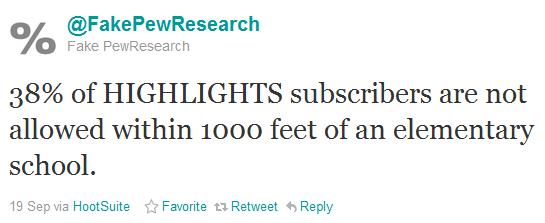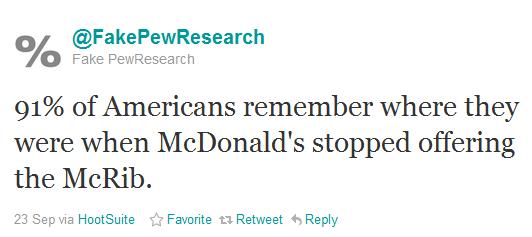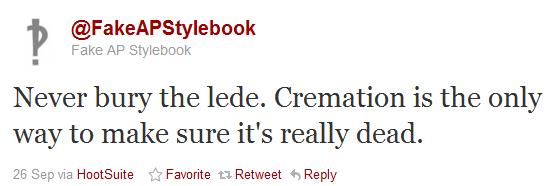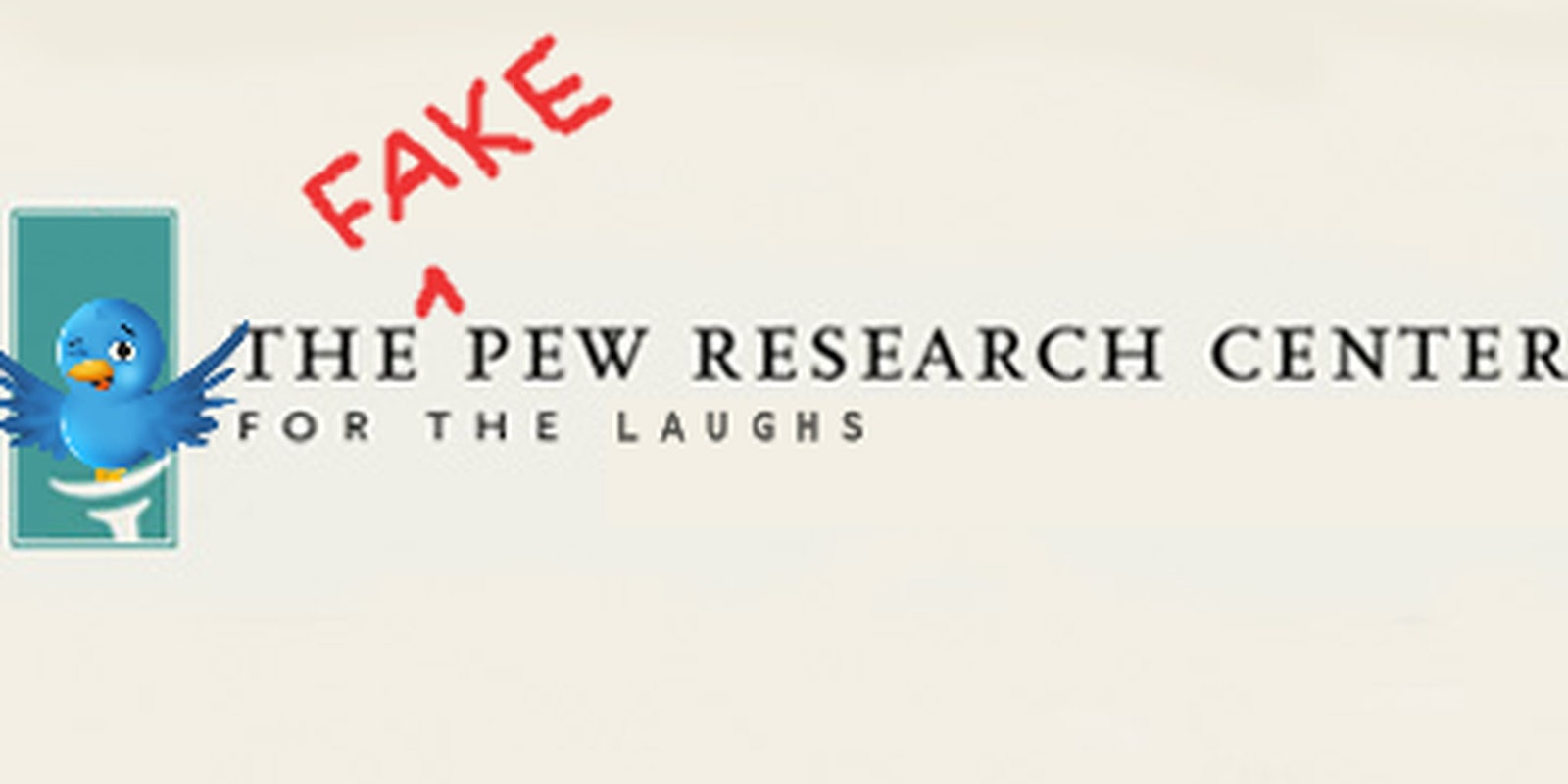Did you know that 33 percent of puppies never get hugged?
Or that the top baby names for 2011 were Edward, Harry, Dylan, Chase and Sealteamsix?
If you do, chances are you are one of the more than 13,800 people following @fakepewresearch, a hilarious new parody Twitter account from the minds behind @fakeapstylebook. The account parodies the Pew Research Center, a think tank established in 2004 as a subsidiary of The Pew Charitable Trusts, known for its public opinion polls and social science research.
In the increasingly popular parody-account community, @fakepewresearch and @fakeapstylebook are anomalies. Not only have they amassed more than 260,000 followers combined, they are managed by a 15-person team called the Bureau Chiefs. They are a group of volunteer journalists, advertising writers, and librarians who mull over and edit every tweet before sending it out to the world. (All have other day jobs.)

“Pew feels unassailable in a way,” Lowery said in an interview with the Daily Dot. “They are partial to lifestyle stuff and they’re not just following politics. I felt like that was the voice to emulate.
“We don’t get too political, we don’t get too vulgar, we don’t get too topical. The trick is to know what you’re talking about when you’re saying the dumbest thing possible. To me, those are the best jokes; the ones that sound really smart but make no sense. For the most part, it’s [about] presenting the absurd seriously.”

And presenting the absurd in a serious manner is no small task. It requires some serious organization. Every Monday Lowery sends out an email blast to all the writers, highlighting themes to be addressed that week. (For example, during Halloween, the group submitted tweets with the hashtag #spookystats.)
The tweets are them submitted via email to Lowery and co-creator Mark Hale who edit, tweak and sometimes nix a tweet. Those sorts of decisions aren’t taken lightly, Lowery said.
“It’s very democratic—the way the jokes are written, the way they’re decided on. If a lot of people think a joke is particularly good and I don’t personally get it, I’ll put it up anyway,” Lowery said.
Inspiration for the jokes are drawn from all different sources. Bureau Chief Dave Wolkin draws takes his from pop culture, current events, and his obsession with the sitcom “Murphy Brown.” Writer RJ White, on the other hand, prefers to go straight to the source.
“A lot of times I look on Pew’s website [and] press releases,” White said. “ I also look at news websites and see what studies and polls have come out [to] try to see if I can put a twist or spin on that.”

While Lowery and the other Bureau Chiefs would like to believe most of @fakepewresearch’s success has come from their humorous tweets, they realize that publicizing the account on @fakeapstylebook has been a huge factor.
While they are volunteers, there are some serious side benefits to doing the work. Since starting @fakeapstylebook in Oct. 2009, the account has landed the Bureau Chiefs a lucrative book deal, countless praises in the mainstream press—and jobs.
“The Fake AP Stylebook definitely helped me get this job,” said Lowery who now works in marketing. “It’s also helped a lot of out writers get a job or get their foot in the door.”
The account also earned the praise from Colleen Newvine, an AP Stylebook product manager, who discussed parody accounts this spring at a South by Southwest panel with Lowery.
“Who can argue with having a good laugh during your day,” Newvine told the Daily Dot. “Journalists can use a good chuckle. It’s a hard business. And if that helps them do their work, I get that.”

Pew Research, on the other hand, declined to comment specifically on the @fakepewresearch account but did say they haven’t received any messages about people confusing both organizations.
One of the proudest moments Lowery can remember since creating @fakeapstylebook is when the account passed the real AP Stylebook Twitter account (@apstylebook) in terms of followers. Lowery and the other writers hope to repeat that success with @fakepewresearch, which is only 26,000 followers away from overtaking Pew’s official Twitter account (@pewresearch). In the meantime, Wolkin is just happy to see people responding to the new parody account.
“Twitter is evolving humor,” Wolkin said. “I think we’re still trying to find out what it means for humour and comedy.”
Illustration by Fernando Alfonso III


